#Autonomous Driving Car
Text
Tesla has made Autopilot a standard feature in its cars, and more recently, rolled out a more ambitious “Full Self-Driving” (FSD) systems to hundreds of thousands of its vehicles.
Now we learn from an analysis of National Highway Traffic Safety Administration (NHTSA) data conducted by The Washington Post that those systems, particularly FSD, are associated with dramatically more crashes than previously thought. Thanks to a 2021 regulation, automakers must disclose data about crashes involving self-driving or driver assistance technology. Since that time, Tesla has racked up at least 736 such crashes, causing 17 fatalities.
This technology never should have been allowed on the road, and regulators should be taking a much harder look at driver assistance features in general, requiring manufacturers to prove that they actually improve safety, rather than trusting the word of a duplicitous oligarch.
The primary defense of FSD is the tech utopian assumption that whatever its problems, it cannot possibly be worse than human drivers. Tesla has claimed that the FSD crash rate is one-fifth that of human drivers, and Musk has argued that it’s therefore morally obligatory to use it: “At the point of which you believe that adding autonomy reduces injury and death, I think you have a moral obligation to deploy it even though you’re going to get sued and blamed by a lot of people.”
Yet if Musk’s own data about the usage of FSD are at all accurate, this cannot possibly be true. Back in April, he claimed that there have been 150 million miles driven with FSD on an investor call, a reasonable figure given that would be just 375 miles for each of the 400,000 cars with the technology. Assuming that all these crashes involved FSD—a plausible guess given that FSD has been dramatically expanded over the last year, and two-thirds of the crashes in the data have happened during that time—that implies a fatal accident rate of 11.3 deaths per 100 million miles traveled. The overall fatal accident rate for auto travel, according to NHTSA, was 1.35 deaths per 100 million miles traveled in 2022.
In other words, Tesla’s FSD system is likely on the order of ten times more dangerous at driving than humans.
3K notes
·
View notes
Text
Since y'all liked that post about Tesla removing the gear selectors in their cars, did you also know that Elon Musk is promising v12.0 of Autopilot Full Self Driving will be "much better" than previous versions. He's claiming it will be the first version without the "Beta" label and will be basically as good or better than a human driver. To show this off, he took to Twitter Live and streamed a 45-minute drive from Twitter HQ to Mark Zuckerburg's house. Live doxxing aside, the best part of this live stream was
A: When the vehicle came to a stop at a red light, waited a few seconds, and then attempted to run the red light while traffic was actively going through the intersection, causing Musk to slam on the brakes and deactivate the system.
B: When the vehicle got caught in a Yellow Light and was taking way longer than necessary to stop, prompting a verbal "I hope it stops," panic from Musk.
Full Self Driving my ass.
#rambles#tesla#elon musk#fuck tesla#fuck elon musk#ai#autonomous cars#car#cars#self driving#public transportation#fuck cars
294 notes
·
View notes
Text
Self driving cars are an inevitability at this point.
Not just assisted, but full autonomous driving. And it is going to fundamentally change our relationship with cars and transportation in general.
People are going to stop buying cars. The whole sales pitch of everyone buying their own self driving car is ludicrous— it fundamentally misses the opportunity that self driving actually presents.
Owning a car sucks. Having constant immediate access to transportation is a form of autonomy.
Both those things can be true. A car has to be maintained, insured, parked, replaced, protected, fueled— this whole laundry lists of responsibilities to maintain access to self directed transportation.
What about all the perks of having a car, but none of the hassle? That’s what a self driving car offers. A car when you need it, where you need it, without having to worry about everything else that goes along with owning a car.
Because you won’t own the car.
How much time do you actually spend driving? How much time is your car just sitting there? Why worry about and pay for a car you’re not driving?
Your car is going to be a subscription service
Uber is already testing this basic model, but in a world of self driving cars it makes perfect sense. You don’t own a car. You have a Car Subscription, which means there is a car there to drive you when you need— scheduled in advance or on demand. You pay for different subscription levels (pay per mile, unlimited, luxury, etc)
A personalized public transportation
People will realize owning a car is actually a burden, and a fleet of self driving cars that take themselves for servicing and refueling is actually a world easier.
There are going to be two major downsides
First, you are going to be tracked. Not just where you’re going but what you’re listening to and riding with on the way there. Think about it— you will not be able to anonymously go anywhere
Owning a car will become suspicious— an expensive luxury that offers anonymity. It will be like having a pager in the 90s— associated with doctors and drug dealers. Bikes and motorcycles will thrive in the ‘socially acceptable non tracked transportation’
Second major issue will be ads
The double edge sword of a self driving car is that it frees you up to do other things.
You think you are going to get to sit and enjoy life uninterrupted by ads during your morning commute? Your Hulu and Netflix are already synced— you buckle your seatbelt and your episode picks up where you left off. Spotify is connected. Your use profile instantly tailors the ride to your tastes
Just watch a couple ads first
You can always pay extra to go ad free. You’re just sitting there anyways. Also means they can finally get rid of billboards (or at least move them to inside the car). Short on funds? Watch ads your whole ride for a discount.
Even shorter on funds? Well, we reached your destination, but the doors won’t unlock until you finish watching this two minute ad (and no closing your eyes)
51 notes
·
View notes
Text
Semi-autonomous "autopilot" cars are dangerous in part due to how human minds work 🚗
We can't have the car driving itself the majority of the time, and expect whoever's in the driver's seat to be ready in the event of a sudden emergency. That isn't how our minds or reflexes work.
Humans are excellent with tools because we treat them as extensions of ourselves. That sounds horribly cliché, but it's accurate. We gain muscle memory specifically for using tools we're practiced with, and they function as though parts of ourselves.
Cars cease to be extensions of ourselves if we take our hands off the wheel, which you're supposed to do if the car is driving itself. We become passengers.
EDIT - I've been told you ARE supposed to keep your hands on the wheel. I maintain it's still no longer an extension of you because you're not actively steering, but this should nonetheless be corrected.
As passengers, if our intervention is necessary to prevent a sudden crash, we're doing so with reduced odds of success. We have to realize what's happening, take the wheel, shift from passenger to driver, and act accordingly in a very brief window of time.
It's a bit like if you've ever been minding your own business, and suddenly heard "think fast" as something was thrown at you by someone you didn't know was there, and you were holding something at the time.
If a car can't safely pull off fully-autonomous, semi-autonomous isn't a compromise. It's accidents waiting to happen.
#dan shive says stuff#cars#self driving cars#By semi-autonomous I effectively refer to full self-driving in which you are expected to be there to supervise#There are comments that say you're supposed to keep your hand on the wheel which is interesting because that's contrary to videos I've foun
147 notes
·
View notes
Text
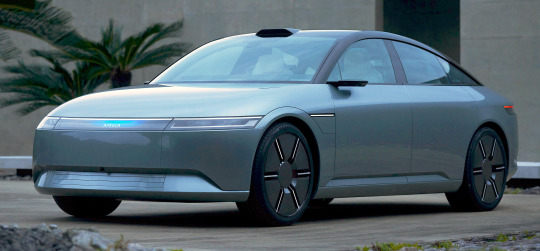
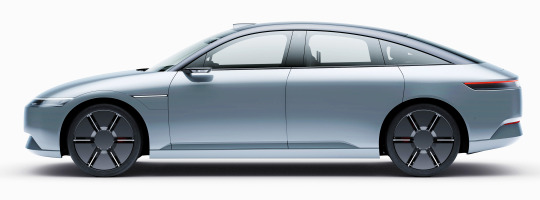
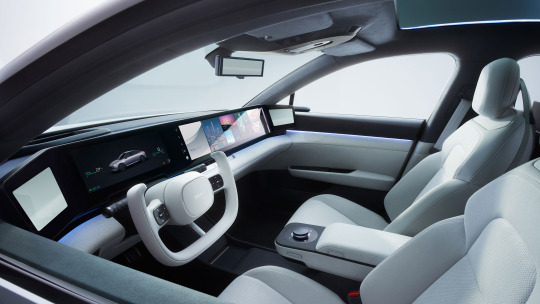
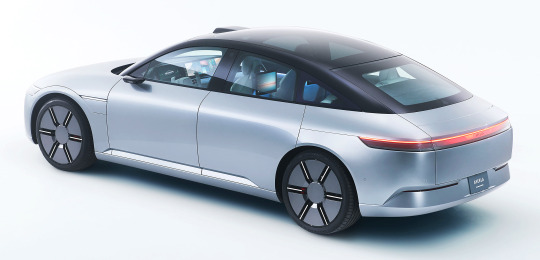

Afeela Prototype, 2023. Sony and Honda have revealed the latest version of the electric saloon they are jointly developing at the CES. It is due to enter production in 2025 and will offer Level 3 semi-autonomous driving system thanks to 45 external cameras and sensors. Few details have been revealed beyond having all wheel drive, which suggests at least a dual motor set-up.
#Afeela#prototype#Sony Honda Mobility#2023#new cars#CES#EV#electric car#futuristic#2025#semi autonomous#all wheel drive#4WD#Sony#Honda
144 notes
·
View notes
Text

الكل على متن أول حافلة مدرسية ترانزيت كهربائية بالكامل من فورد E-Transit Van
#electric car#self-driving cars#technology#smartcity#emobility cars mobility robot driverlesscars robotics ai guidaautonoma autonomous electricvehicles
7 notes
·
View notes
Text
The DARK SIDE of AI : Can we trust Self-Driving Cars?
Read our new blog and follow/subscribe for more such informative content.
#artificialintelligence #ai #selfdrivingcars #tesla
Self-driving cars have been hailed as the future of transportation, promising safer roads and more efficient travel. They use artificial intelligence (AI) to navigate roads and make decisions on behalf of the driver, leading many to believe that they will revolutionize the way we commute. However, as with any technology, there is a dark side to AI-powered self-driving cars that must be…
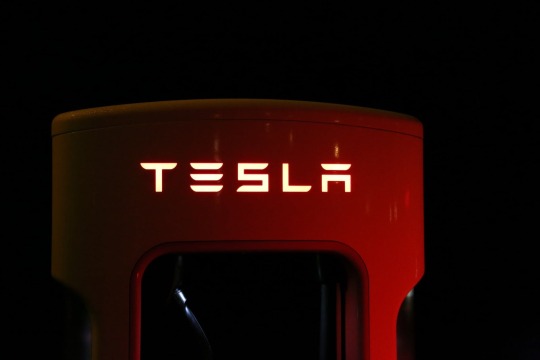
View On WordPress
#AI and society#AI safety#artificial intelligence#Autonomous driving#Autonomous vehicles#Cybersecurity#Dangers of AI#Driverless cars#Ethics of AI#Future of transportation#Human error#machine learning#Potential dangers#Regulations for self-driving cars#Risks of self-driving cars#Road safety#Safety concerns#Self-driving cars#Technological progress#Trust in technology
16 notes
·
View notes
Text
2 notes
·
View notes
Text
Self-driving cars are here and they’re watching you
“‘For years we’ve had growing numbers of features that are turning our cars into policing tools,’ said Albert Fox Cahn, an anti-surveillance activist and director of the Surveillance Technology Oversight Project. ‘Now that we can no longer deny that this is going to be a way people are tracked, we have to ask if the car companies are willing to make the sort of investment it takes to prevent their cars from driving us straight into authoritarianism.’ ...
“Privacy experts warn that surveillance technology and systems which collect user data that are vulnerable to law enforcement requests disproportionately harm marginalised groups and are a violation of constitutional rights to privacy.
“When it comes to self-driving systems, cameras play a crucial role. The cameras on the outside of the cars help vehicles navigate the streets they’re driving on and manufacturers say the cameras inside the vehicles allow them to support customers as needed. Surveillance is hard to ignore when you’re in one of these vehicles. On a recent test drive of a Cruise driverless car in San Francisco, friends and I were confronted by cameras staring down at us from all directions as soon as we got into the car. One of my friends was so uncomfortable that she covered her face throughout the ride.
“Unsurprisingly, police have started to wise up to the potential for the footage these cameras capture to help them in investigations ... There’s also precedent for police to ask for footage from systems that record inside and outside enclosed spaces, according to Cahn. ‘We already see examples of people getting police warrants for Ring camera data from both outside and within their homes,’ he said. ‘Where there’s a camera, it’s just one court order away from being used against you in a court of law.’”
#waymo#self-driving cars#driverless cars#autonomous cars#cars#road safety#transport#silicon valley#big tech#tech#surveillance state#surveillance#privacy#human rights#civil liberties#authoritarianism#police#security services#san francisco#us
2 notes
·
View notes
Text
I bet you can't guess where the new Apple Car 1 concept car's charging port is located

8 notes
·
View notes
Text
We don’t yet know exactly why a group of people very publicly graffitied, smashed, and torched a Waymo car in San Francisco. But we know enough to understand that this is an explosive milestone in the growing, if scattershot, revolt against big tech.
We know that self-driving cars are wildly divisive, especially in cities where they’ve begun to share the streets with emergency responders, pedestrians and cyclists. Public confidence in the technology has actually been declining as they’ve rolled out, owing as much to general anxiety over driverless cars as to high-profile incidents like a GM Cruise robotaxi trapping, dragging, and critically injuring a pedestrian last fall. Just over a third of Americans say they’d ride in one.
We also know that the pyrotechnic demolition can be seen as the most dramatic act yet in a series of escalations — self-driving cars have been vocally opposed by officials, protested, “coned,” attacked, and, now, set ablaze in a carnivalesque display of defiance. The Waymo torching did not take place in a vacuum.
To that end, we know that trust in Silicon Valley in general is eroding, and anger towards the big tech companies — Waymo is owned by Alphabet, the parent company of Google — is percolating. Not just at self-driving cars, of course, but at generative AI companies that critics say hoover up copyrighted works to produce plagiarized output, at punishing, algorithmically mediated work regimes at the likes of Uber and Amazon, at the misinformation and toxic content pushed by Facebook and TikTok, and so on.
It’s all of a piece. All of the above contributes to the spreading sense that big tech has an inordinate amount of control over the ordinary person’s life — to decide, for example, whether or not robo-SUVs will roam the streets of their communities — and that the average person has little to no meaningful recourse.
520 notes
·
View notes
Text
Honda has to have one of the worst Lane Keep Assist Systems ever.
Like how tf are you, the computer, gonna push me into the rumble strips and them scream at me on your wittle screen about Lane Departure. Like, I know we're departing the lane. You're the one who took the curve too tight!
And don't even get me started on how awful the line tracking it. Like, oops, lane's getting wider. Better move over really fast and jerk the steering wheel really hard. Wait... what's this "interstate exit" you speak of? Better jerk the steering wheel back the other way and get back centered into the lane we were never supposed to leave.
Oh, the car in front of us is entering the turn lane? Better slam on the brakes and match its speed until it's been fully out of the main lane for a solid fifteen seconds.
And then there are the times it just gives you back control without warning. No audible chime at all. You'll be mid-turn on a curvy highway, and it'll just decide "nope, I'm done" and all off a sudden steering assist is disabled, and you're veering into the next lane, and then you realize the car can't see the lines anymore, so you have to jerk really hard back into your lane, and it's just ugh.
Remember when Honda said all of their cars would come standard with Level 5 autonomy by 2025. Lol.
#rambles#rant#car#cars#vehicle#vehicles#driver assistance systems#driver assistance technology#honda#honda sensing#autonomous vehicles#autonomous driving
6 notes
·
View notes
Text
Fire chief warns against ‘unleashing’ self-driving taxis in San Francisco | California | The Guardian
1 note
·
View note
Text
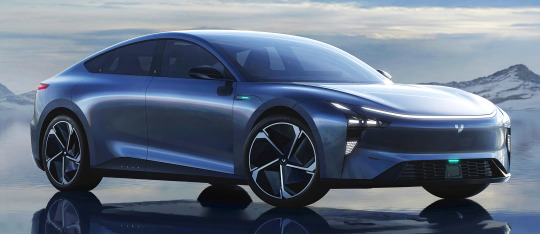



Jidu ROBO-02 Concept, 2023. Fledgling autonomous EV marque Jidu have revealed a second model in concept form. Few details have been disclosed about the robotic saloon, it's SUV sibling model the ROBO-01 is equipped with two Nvidia Orin X chips that deliver up to 508 TOPS of computing power. These help control 31 different sensors, including 2 LiDARs, 5 millimeter-wave radars, 12 ultrasonic radars, and 12 high-definition cameras. Like 01 the 02 does without door handles, instead the doors can be opened using voice command or bluetooth.
#Jidu#Jidu ROBO-02#concept#prototype#2023#autonomous#EV#electric car#self driving cars#robot car#AI#design study
92 notes
·
View notes
Text
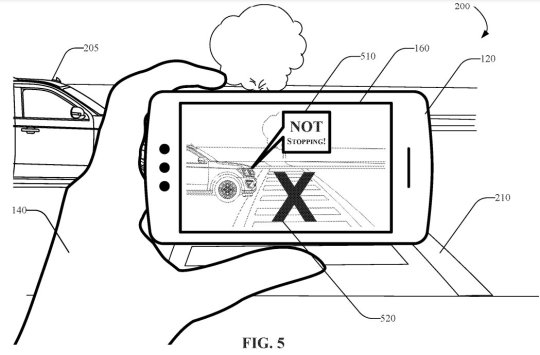
Ford has patented an augmented reality phone app to inform you that an autonomous murderbot has no intention of stopping at the crosswalk (US11396271B2)
(via jwz)
2 notes
·
View notes
Video
youtube
The Future of Autonomous Vehicles
#youtube#ai autonomous cars electric self-driving vehicles education tips tutorial lecturer presenter
0 notes